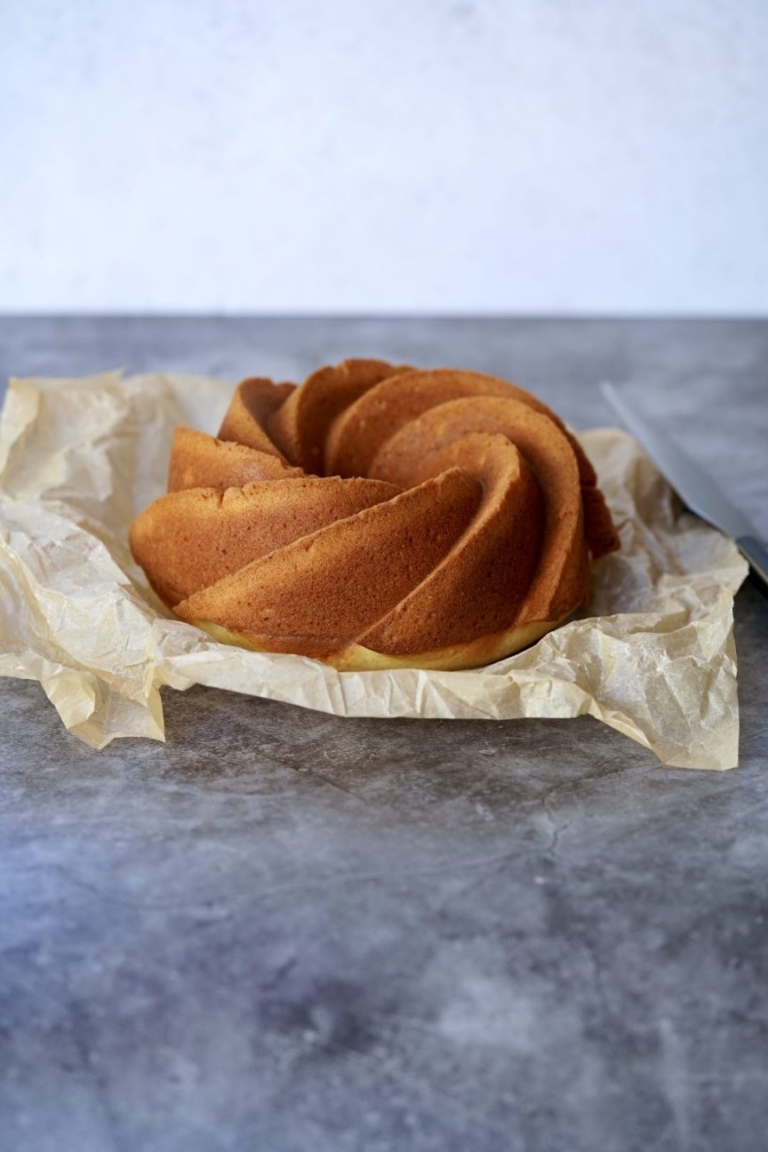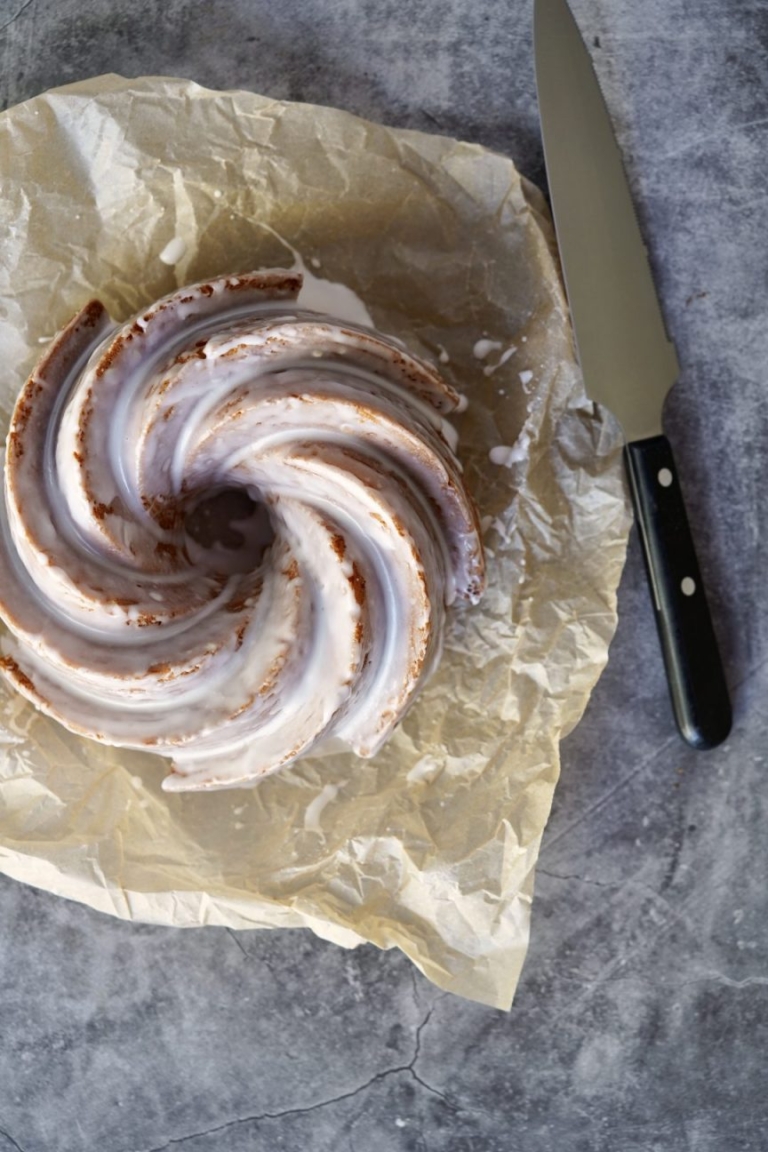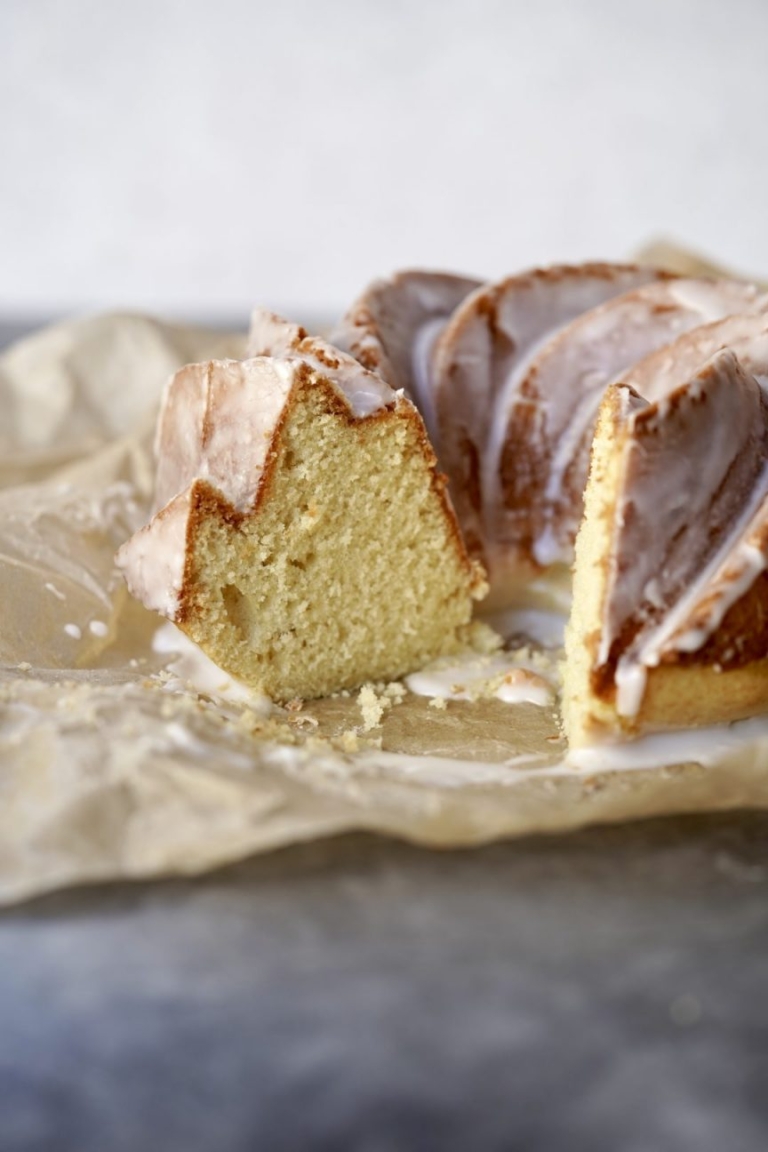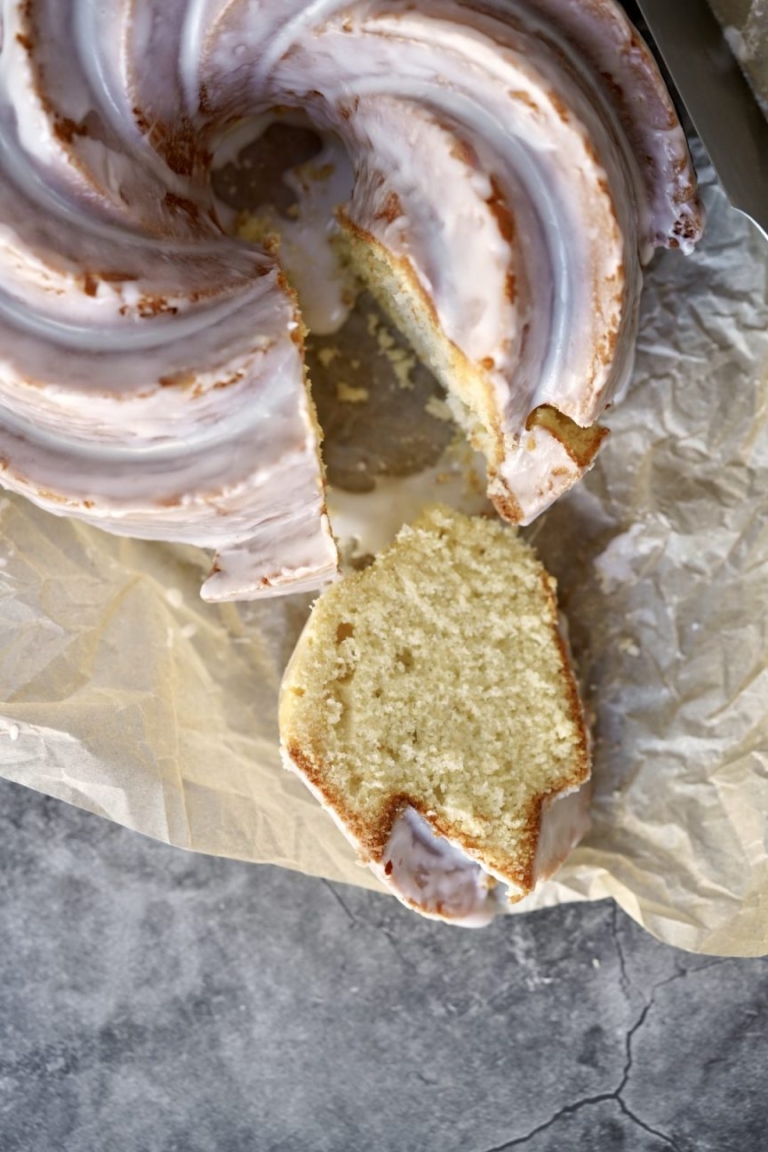Glazed Donut Bundt Cake
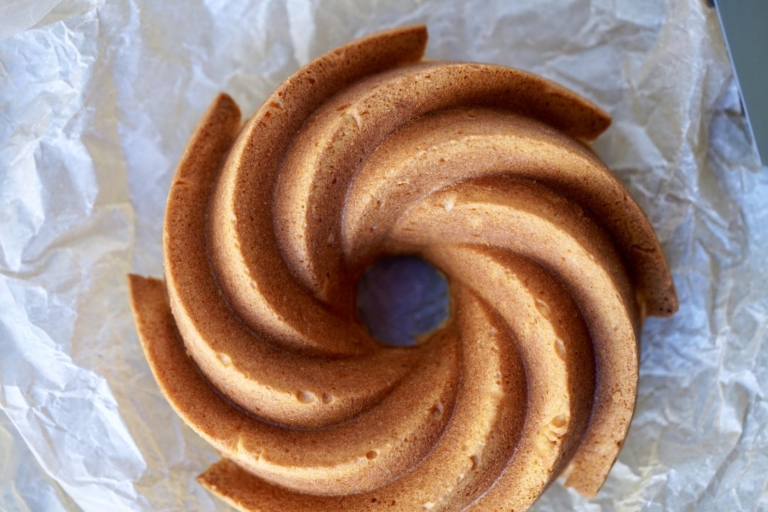
In case it’s not clear from the title, yes, this is a giant glazed donut cake. Seriously, I almost don’t need to say anymore. This Bundt cake is outrageously good and if you are a donut fan, think no more, skip this post, and just begin making it right now.
The History of Old Fashioned Donuts
The old-fashioned donut is the cousin to the cake donut (my second favorite donut). It’s risen with a chemical leavening and can be made into either batter or dough. What most don’t know, is an old-fashioned donut is fried at a lower temperature than other donuts, which is what creates those well-known rough edges.
According to Wikipedia, “the old-fashioned donut is a type of cake donut and has been described as a “subset” of the cake doughnut. The cake donut itself originated in the United States circa 1829, when the increased availability of pearlash in the U.S., a type of leavened that preceded baking powder, lent to the increase of cake doughnut consumption.”
It is somewhat unclear when exactly the old-fashioned donut itself was invented, but they likely got invented after the cake donut. We know this because before 1829, donuts were typically the yeast-risen variety in the U.S. After the 1830s when learners, such as baking soda and baking powder began to be available to U.S. consumers, which is around the same time that cake donut recipes first appeared in U.S. cookbooks.
I baked this donut Bundt cake in a “fancy” bundt pan so the swirls were pronounced and the glaze plentiful. But that is not required equipment, it can be baked in an ordinary Bundt pan you happen to have on hand, but the more cracks in the cake the better as it allows for more surface area to be glazed. As the weekend approaches and we continue to ride out this Omicron wave, I suggest bunkering down, making this bundt cake, and focusing on all the good things around you, something that’s easy to overlook in a time of crisis.
Glazed Donut Bundt Cake
Ingredients:
For the Cake Batter:
- 1 1/2 cups sugar
- 1 cup unsalted butter, softened
- 4 eggs, room temperature
- 2 teaspoons vanilla extract
- 3 1/2 cups all-purpose flour
- 2 teaspoons baking powder
- Dash of salt
- 1/2 teaspoon baking soda
- 1 cup buttermilk
For the Glaze:
- 2 cups Confectioners' sugar
- 1/4 cup milk
Directions:
- Preheat oven to 350 degrees F. Lightly oil a 12- to 15-cup Bundt pan and set aside.
- For the cake batter, in the bowl of a stand mixer, such as a KitchenAid, fitted with a paddle attachment, add the sugar and butter and beat on medium-high until pale yellow and fluffy, about 2-3 minutes, scraping down sides as needed. Add the eggs, 1 at a time, beating until just combined. Add the vanilla and blend.
- In a small bowl add the flour, baking powder, salt, and baking soda and mix well. With mixer on low, slowly add flour mixture, alternately with the buttermilk, beat until just combined.
- Spoon the batter into prepared pan. Gently tap the pan on the counter a few times to release any air bubbles. Place in the oven and bake until set or a cake tester comes out clean, about 50 minutes.
- Remove the cake from the oven and let cool in pan for about 15 minutes. Once cool enough to handle, invert the bundt cake out of pan onto a serving platter. Allow the cake to cool completely, before glazing.
- For the Glaze: In a medium bowl, add the confectioners' sugar and milk, whisk until smooth. Carefully pour the glaze over the cooled cake. Slice and serve.

